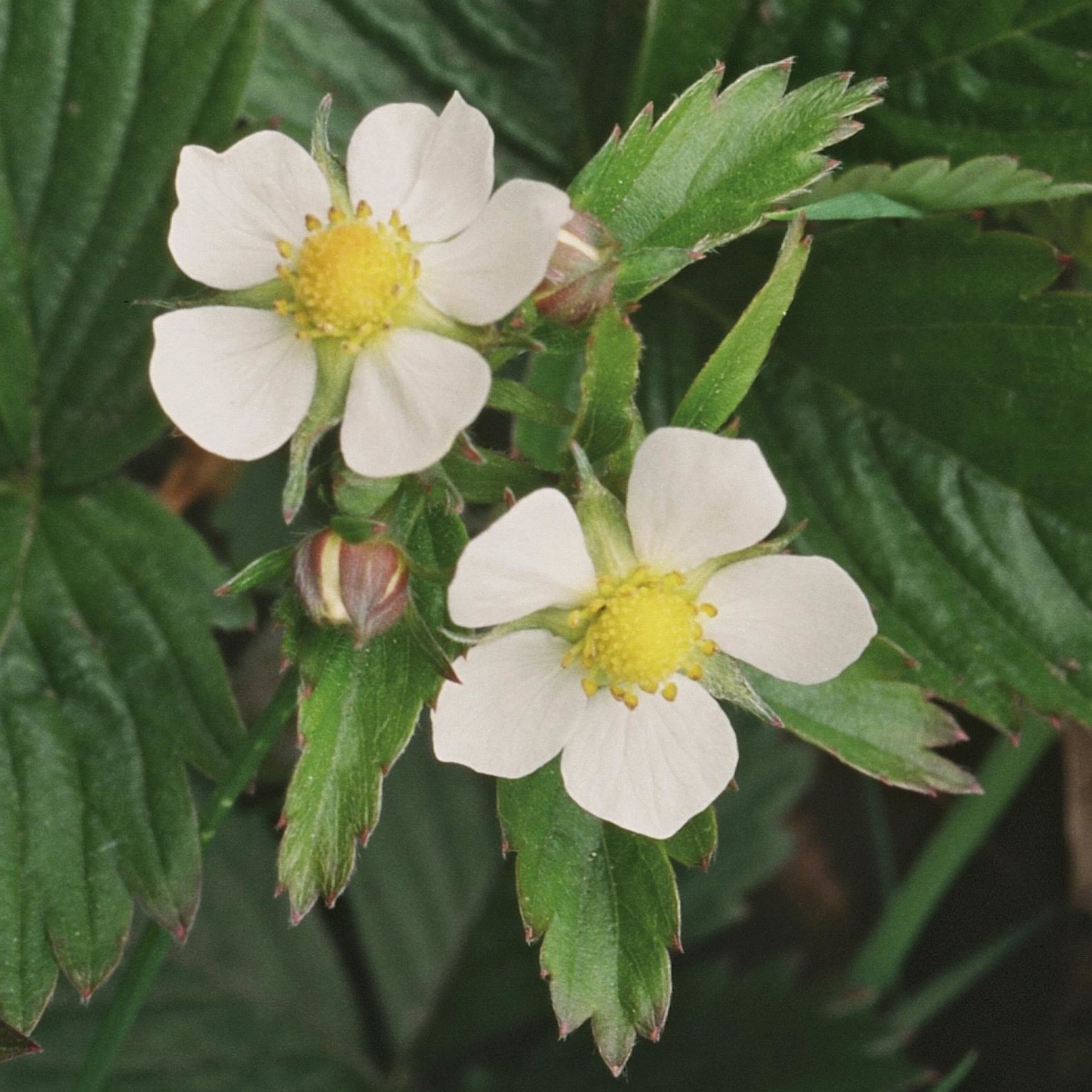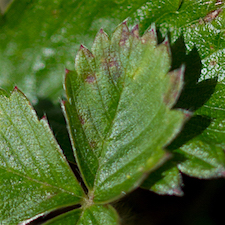
Similar at first glance to Wild Strawberry, the pretty Barren Strawberry can be found flowering earlier, from February through to May.
Photo: © Natural England/Peter Wakely
Scientific name: Potentilla sterilis
Other common names: Strawberryleaf Cinquefoil
What to look for:
• Family: Rosaceae (Rose family)
• Flowers: White petals 10 to 15 mm in diameter, with yellow centre. Sepals visible between and almost as long as petals.
• Leaves and stem: Trifoliate, toothed blue-green leaves up to 2.5 cm long, on short runners. The end tooth of each leaf is shorter than the one on either side of it.
• Height: 5 to 15 cm.
• Where: Common across the UK, other than northern Scotland, especially in woods, hedges and scrub.
• When: Flowers from February to May.
• Habit: Upright, with runners.
Spot a few, five-petalled small flowers borne on runners with trifoliate leaves, and you think Wild Strawberry (Fragaria vesca). Take a closer look, though, and you might find it is in fact Barren Strawberry (Potentilla sterilis), another member of the Rose family, but found in a different genus to the true strawberries.
Both Wild and Barren Strawberry look superficially similar. The most obvious difference is that the Barren Strawberry does not have the red and fleshy fruits of the former, but there are two other ways to tell them apart fairly easily using the flowers and leaves, even before the fruits appear. The panel below explains.


Flowers: Barren Strawberry (top) has sepals almost as long as the petals, and usually more obvious between the petals than those of Wild Strawberry (bottom).

Leaves: The terminal tooth of a Barren Strawberry (top) leaf is shorter than the teeth on either side of it, unlike Wild Strawberry (bottom) where the terminal tooth is longer.
Did you know…?
…The Barren Strawberry flowers much earlier than either the Wild or Garden Strawberries, and its fruits are inedible.
More information and references:
Rose, F. and O’Reilly, C., 2006. The Wild Flower Key, 2nd edition. Frederick Warne, London.
Stace, C., 2010. New Flora of the British Isles, 3rd edition. Cambridge University Press, Cambridge.
Published: May 2016
Author: Amanda Scott
Photos: © Natural England/Peter Wakely; in panel, top right and lower row – Amanda Scott
